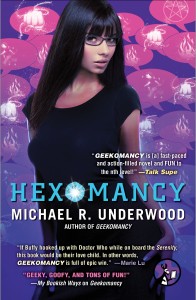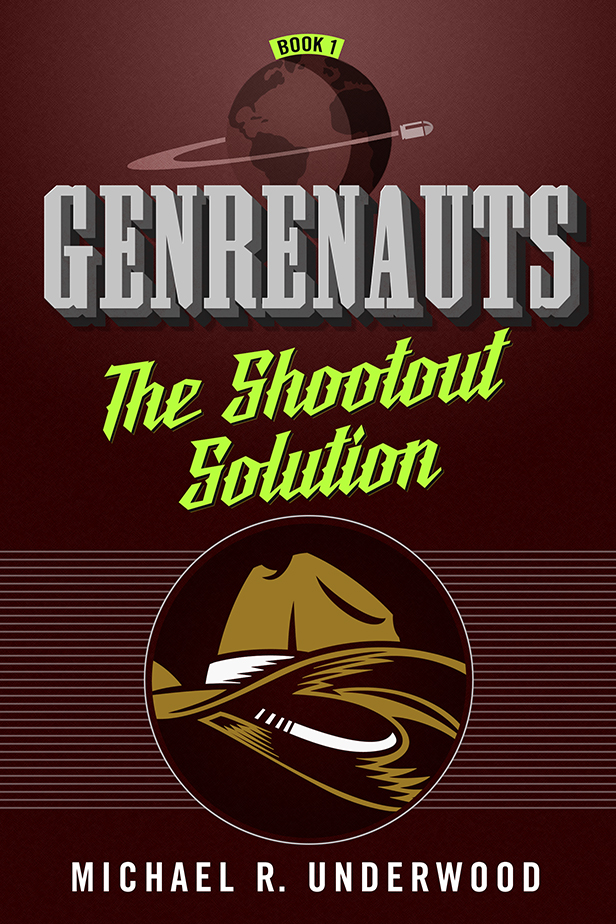Earlier this week, Tor announced that it had partnered with BitLit to offer discounted ebook editions to readers who already own print editions ($2.99 per book).

Angry Robot has had a bundling promotion running for some time, offering free ebooks to customers who buy the physical from one of several bookstore partners, or at conventions.
Bundling has been an on-again, off-again hot-button topic in the publishing world, as readers lobby for getting the ebook edition for free with their physical purchase. A frequent argument I see is that if a reader pays for a book, they feel like they should be able to consume that book in whatever format they want – they’ve bought the content, so format shouldn’t matter.
The production realities in publishing aren’t quite that simple. The final steps in book production diverge between print and ebook – so the work-hours that make an ebook are different work-hours, with different skills and programs needed, than the work-hours that produce a finished physical book.
Don’t get me wrong – I think print + ebook bundling should be universally available. TV and Film companies have already figured this out – in the US at least, consumers can by a DVD, DVD + BluRay, or DVD + BluRay + Digital Download. Sometimes there’s even a 3D BluRay in there. But the different formats are available together. And sometimes the programs involved in the digital download even work (and sometimes they don’t – I’m looking at you Ultraviolet).
To sell a bundled print + ebook edition, here’s what publishers have to do:
1) Partner with BitLit or similar companies, selling companion ebooks at a discounted price to verified print owners (who mark up their physical book to claim the ebook).
2) Create a separate edition (with a separate ISBN) for bundling. That bundling edition would likely cost $1-$5 more than the normal physical edition, just as the DVD + BluRay + Digital Download edition of a film/TV show costs ~$5 more than the DVD + BluRay edition (though digital films/TV shows tend to cost more than individual ebooks). This probably means creating a series of download codes for every book, printing a pull-off-sticker on the inside cover or the like. Printing download codes in plain sight in or on the cover would be incredibly rife for abuse, so some precautions are expected. Marvel comics does this as the default for some comics, offering a free digital download.
2a) As above, but offer universal bundling for no additional cost. That has its own difficulties, as expressed below in Show Me The Money.
3) Publishers broker deals such that every print edition retailer creates a partnership with ebook retailers to enable bundling up-sales at point of sale/checkout. Buy a paperback book, automatically get prompted to buy the ebook at a discounted rate. Amazon has something like this with MatchBook, though only a few publishers have signed on for the program.
Show Me The Money
Here’s the big question, the one I don’t see asked as often.Who gets paid, and how much?
How does bundling impact how authors are paid?
For this, I’m going to get very hands-on with #s and $. There will even be charts. You have been warned.
Royalties, the amount per sale that writers are paid (against advance or directly) is determined by the specific contract with the publisher. In self-publishing, the terms are not royalties, but instead the creator’s share (as the author-publisher).
But if a physical edition AND ebook edition are being sold at once, how is the royalty calculated? If the ebook is a free add-on, then the author only gets the paperback royalty despite that when looked at from the current paradigm, the book is being sold twice, once in each format.
Part of the trick here is that physical royalties are calculated differently than ebooks. In most contracts, print royalties are calculated off of list price (aka the published price on the cover), 6-8% for Mass Market, 8-10% for Trade Paperback, and ~12% for HC. These rates vary by contract.
Ebook royalties, however, are calculated on net sales, the publisher share of the list price. That’s usually 70% of list price in agency agreements, and usually 50% in Wholesale agreements.
This means that in many cases, authors can get more $ proportionally and in real $s.
Let’s do some comparisons:
For each format, I’ve market the highest royalty for the author in Bold, the 2nd best in Italics, and the third is left in plain text.
|
Paperback Price ($) |
Royalty ($) 8% |
Ebook price ($) |
Royalty ($) – Agency 70% |
Royalty ($) – Wholesale 50% |
| Mass Market (8% Print royalty) |
7.99 |
0.64 |
6.99 |
1.22 |
0.87 |
| Trade Paperback (10% Print Royalty |
14.99 |
1.49 |
9.99 |
1.75 |
1.29 |
| Hardcover (12% Print Royalty) |
25.99 |
3.11 |
12.99 |
2.27 |
1.63 |
So we see that Agency Ebook is the best deal for the author in paperback, but Hardcover tends to pay more than even agency. This is due to the fact that ebook prices scale up as the formats get more expensive, but not at the same rate that print edition prices increase. There’s been major consumer pushback against fiction ebook prices above $10, and especially over $12-13. Ebooks for titles released in Hardcover would need to be priced at $17.99 for the ebook to earn a higher $ royalty than the Hardcover.
N.B. – These price levels are not universal, nor are the royalty rates. Angry Robot prices all ebooks for individual books at $6.99, and Saga Press’ recent release of Ken Liu’s Grace of Kings is priced at $7.99 in ebook, even as the hardcover sells for $27.99.
Price elasticity of demand is a thing, here, and it’s likely that when a book is cheaper than the physical edition, they ebook may sell proportionally more, makin up the per-unit royalty loss with volume sales. Several publishers have tried this approach, and it is the default approach for author-publishers, who tend to set the print $ far higher than the ebook price to show the discount, while usually pricing ebooks at $4.99 and below (sometimes far below). And yet some of these author-publishers have made incredibly good $ selling at those bargain prices, even with a lower author’s share due to vendor agreements (bringing in 35% per sale instead of 70%).
Given that authors tend to receive a better $ royalty for ebook sales when the title’s physical edition is a paperback, how do publishers adjust the sale royalty for a bundled edition?
If the bundling happens with its own edition, how will royalty be calculated – List or Net, and at what rate?
I’d propose that a bundled edition, being sold as a physical book, would probably need to be based off of the print royalty, with a bonus for the ebook, maybe around +5-8% of list.
So 8% of list for the MM, but +5% bonus for the ebook, for 13% of list. The reader is effectively paying $2 extra for the ebook, and the author is getting about 2x the royalty as they would on a $7.99 MM.
The result would look like this:
|
Bundle Edition Price ($) |
Royalty $ |
| Mass Market + Ebook (13% List) |
$9.99 |
$1.30 |
| Trade Paperback + Ebook (15% List) |
$17.99 |
$2.70 |
| Hardcover + Ebook (20% List) |
$29.99 |
$5.99 |
The royalty gain is higher in Hardcover due to the fact that the promotional price increase of adding $2 is very small in a Hardcover, and publishers margins on a Hardcover are quite good, so I added 8% to the royalty rate instead of 5, especially since Hardcover books are the ones most vulnerable to losing sales to their ebook edition counterpart (due to the larger price difference).
The question then is – would readers pay these rates to get print + ebook as a default? I know I would, as I like to have both editions when I can. you have other thoughts on how to implement a bundling model? Do you want bundled ebooks with physical editions? How would you want them?
Do you have any other thoughts on how to implement a bundling model? Would you want bundled ebooks with physical editions? How would you want them? How much extra is a fair price to get a bundled ebook?




